Pegbovigrastim treatment in vivo does not affect granulocyte ability to migrate to endometrial cells and kill bacteria in vitro in healthy cows
(2019)
Journal Article
Tombacz, K., Peters, L. M., Chang, Y. M., Steele, M., Werling, D., & Gibson, A. J. (2019). Pegbovigrastim treatment in vivo does not affect granulocyte ability to migrate to endometrial cells and kill bacteria in vitro in healthy cows. Journal of Dairy Science, 102(10), 9389-9395. https://doi.org/10.3168/jds.2019-16563
In periparturient dairy cows, immune suppression, resulting in decreased neutrophil numbers and function, leads to increased susceptibility to postpartum conditions such as mastitis, retained placenta, and metritis. Administration of polyethylene gly... Read More about Pegbovigrastim treatment in vivo does not affect granulocyte ability to migrate to endometrial cells and kill bacteria in vitro in healthy cows.
